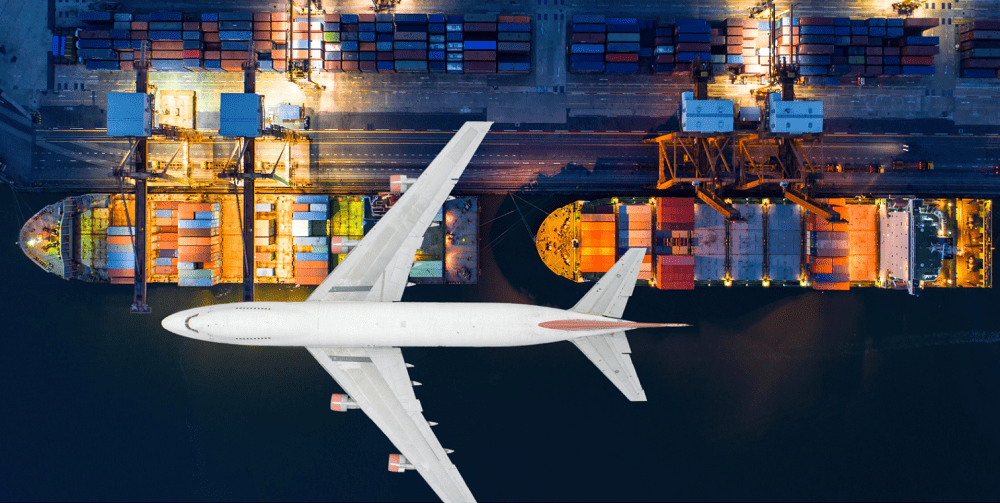Home » IEC Code
IEC Registration in India: A Complete Guide for Importers and Exporters

In today’s globalized economy, Indian businesses are rapidly expanding into international markets. Whether it’s exporting handicrafts from Jaipur, importing machinery from Germany, or trading software services globally, every cross-border business transaction requires a unique identification number known as the Import Export Code (IEC). If you’re planning to start an import or export business, understanding IEC registration in India is essential. This 10-digit code issued by the Directorate General of Foreign Trade (DGFT) serves as a business identity for international trade transactions.
In this detailed guide, we’ll explore everything you need to know about IEC registration in India — from its meaning and process to benefits, eligibility, and expert tips to ensure smooth registration.
What is IEC Registration in India?
IEC (Import Export Code) is a mandatory business identification number issued by the DGFT, Ministry of Commerce, Government of India, to any business or individual involved in import or export activities.
Without an IEC, you cannot legally import goods into India or export goods outside India. It acts as a universal code for your import-export operations and is required by banks, customs authorities, and other government agencies.
Key Points:
IEC is a 10-digit unique code valid for a lifetime.
It is required for both goods and services exports/imports.
No renewal is needed; however, it must be updated annually online.
IEC can be obtained by individuals, companies, partnerships, LLPs, and startups.
Importance of IEC Registration
IEC registration plays a vital role in international trade for the following reasons:
Legal Authorization – It is a government-mandated requirement for any import/export activity.
Business Expansion – Helps businesses access global markets and foreign buyers.
Customs Clearance – Required by customs officials for clearance of shipments.
Banking Requirements – Banks need IEC for processing foreign trade payments.
Global Recognition – Acts as a global identity for your business in foreign trade.
Who Needs IEC Registration in India?
Any individual or organization involved in the import or export of goods and services must obtain an IEC. This includes:
Proprietorship firms
Partnership firms
LLPs (Limited Liability Partnerships)
Private Limited or Public Limited Companies
Trusts and Societies
Individuals conducting import/export under their name
Exceptions:
IEC registration is not required in the following cases:
Import/export for personal use not related to trade or manufacturing.
Import/export by government departments or notified charitable organizations.
Businesses covered under GSTIN, where PAN acts as an IEC.
Documents Required for IEC Registration in India
To register for IEC online, you’ll need the following documents:
For Individuals and Sole Proprietors:
PAN Card (Individual)
Aadhaar Card
Bank account details (cancelled cheque or bank certificate)
Address proof of business (utility bill or rental agreement)
Passport-size photograph
For Companies/LLPs/Partnerships:
PAN Card of the entity
Certificate of Incorporation or Partnership Deed
Company’s bank details
Address proof (lease agreement, electricity bill, etc.)
Digital Signature Certificate (DSC) of the authorized signatory
Step-by-Step Process for IEC Registration in India
Follow this simple online process to obtain your Import Export Code through the DGFT portal:
Step 1: Visit the DGFT Portal
Go to the official DGFT website (https://www.dgft.gov.in/).
Step 2: Create a User Account
Register as a new user using your business PAN, email ID, and mobile number.
Step 3: Select “Apply for IEC”
Log in and select the “Apply for IEC” option under the Services tab.
Step 4: Fill the Application Form (ANF-2A)
Provide all necessary details such as:
Business name and type
PAN details
Bank account details
Business address
Contact information
Step 5: Upload Required Documents
Attach scanned copies of documents mentioned earlier (PAN, bank proof, address proof, etc.).
Step 6: Pay the IEC Registration Fee
Pay the nominal fee of ₹500 online through credit/debit card or net banking.
Step 7: Verification and Issue of IEC
Once verified, the DGFT will issue your IEC certificate electronically within 1–2 business days.
Benefits of IEC Registration in India
Here are the major advantages of obtaining IEC:
1. Global Market Access
With IEC, you can expand your business beyond India’s borders, entering international markets to sell products or services globally.
2. No Compliance Hassles
Unlike other registrations, IEC doesn’t require periodic renewal or annual compliance.
3. Ease of Customs Clearance
Importers and exporters can easily clear shipments through customs by quoting their IEC number.
4. Availing Government Schemes
Businesses with IEC can avail various export incentives such as:
Duty Drawback Scheme
MEIS (Merchandise Exports from India Scheme)
SEIS (Service Exports from India Scheme)
5. Enhances Business Credibility
IEC adds credibility to your business, making it trustworthy for global buyers and suppliers.
Validity and Renewal of IEC Code
An IEC registration is valid for a lifetime and does not require renewal. However, as per DGFT’s latest guidelines (2021 onwards), IEC details must be updated online annually between April and June, even if no changes occur.
Failing to update the IEC may result in deactivation until it is updated again.
Common Mistakes to Avoid During IEC Registration
Many applicants face delays or rejections due to simple errors. Here are common mistakes to avoid:
Incorrect or mismatched PAN and business details
Uploading unclear or invalid documents
Using a personal bank account instead of a business one
Not updating IEC annually as per DGFT guidelines
Entering wrong email or mobile number (used for OTP verification)
Pro Tip: Always double-check your application before submission and keep soft copies of all documents for records.
Cost and Processing Time for IEC Registration
Government Fee: ₹500 (as per DGFT)
Professional Fee: ₹1,000–₹2,000 (if applying through a consultant)
Processing Time: Usually 1–2 business days after document verification.
Real-Life Use Case: A Success Story
Let’s take an example:
Arjun Textiles Pvt. Ltd., based in Tirupur, Tamil Nadu, decided to export cotton garments to the UAE. To start, they obtained their IEC registration in India through DGFT.
Once registered, they were able to:
Export legally through customs clearance.
Open a foreign currency account with their bank.
Receive export incentives under the MEIS scheme.
Expand their customer base globally.
Within six months, Arjun Textiles increased its revenue by 35% through exports — all starting with IEC registration.
Pros and Cons of IEC Registration
| Pros | Cons |
|---|---|
| Easy online application | Needs annual updation |
| Lifetime validity | Limited to one PAN (cannot transfer) |
| Access to export benefits | Non-compliance leads to deactivation |
| Boosts global credibility | Minor technical errors may delay approval |
How Professional Assistance Can Help
While IEC registration is straightforward, many applicants prefer professional help to ensure a hassle-free process.
Consultants like Invention Tax Solutions can assist with:
Document verification
Form submission
Error-free application filing
Annual IEC updates
You can also explore [Business Registration Services in India], [GST Registration Services], or [Trademark Registration Services] for a complete business compliance package.
Frequently Asked Questions (FAQs)
1. What is IEC registration in India?
IEC registration in India is a 10-digit code issued by DGFT that allows businesses or individuals to import or export goods and services legally.
2. Is IEC mandatory for online exporters like Amazon or eBay sellers?
Yes, even online sellers dealing with cross-border e-commerce platforms must have an IEC to export goods outside India.
3. Can an individual apply for IEC without owning a company?
Yes. Individuals with a valid PAN and bank account can apply for IEC in their name.
4. How long does it take to get IEC registration?
Usually, IEC is issued within 1–2 business days after successful document verification and fee payment.
5. What happens if I don’t update my IEC annually?
If IEC details are not updated between April and June every year, it may be deactivated temporarily until the update is done online.
Conclusion
IEC registration in India is the gateway for businesses to explore global trade opportunities. Whether you’re an individual entrepreneur or a growing enterprise, having an IEC ensures you can import or export goods and services legally, avail government benefits, and establish credibility with international partners.
If you’re planning to start your import-export journey, take the first step today by applying for your IEC registration in India with the help of professionals at Invention Tax Solutions.
👉 Get expert assistance today — Simplify your IEC registration process and grow globally!


